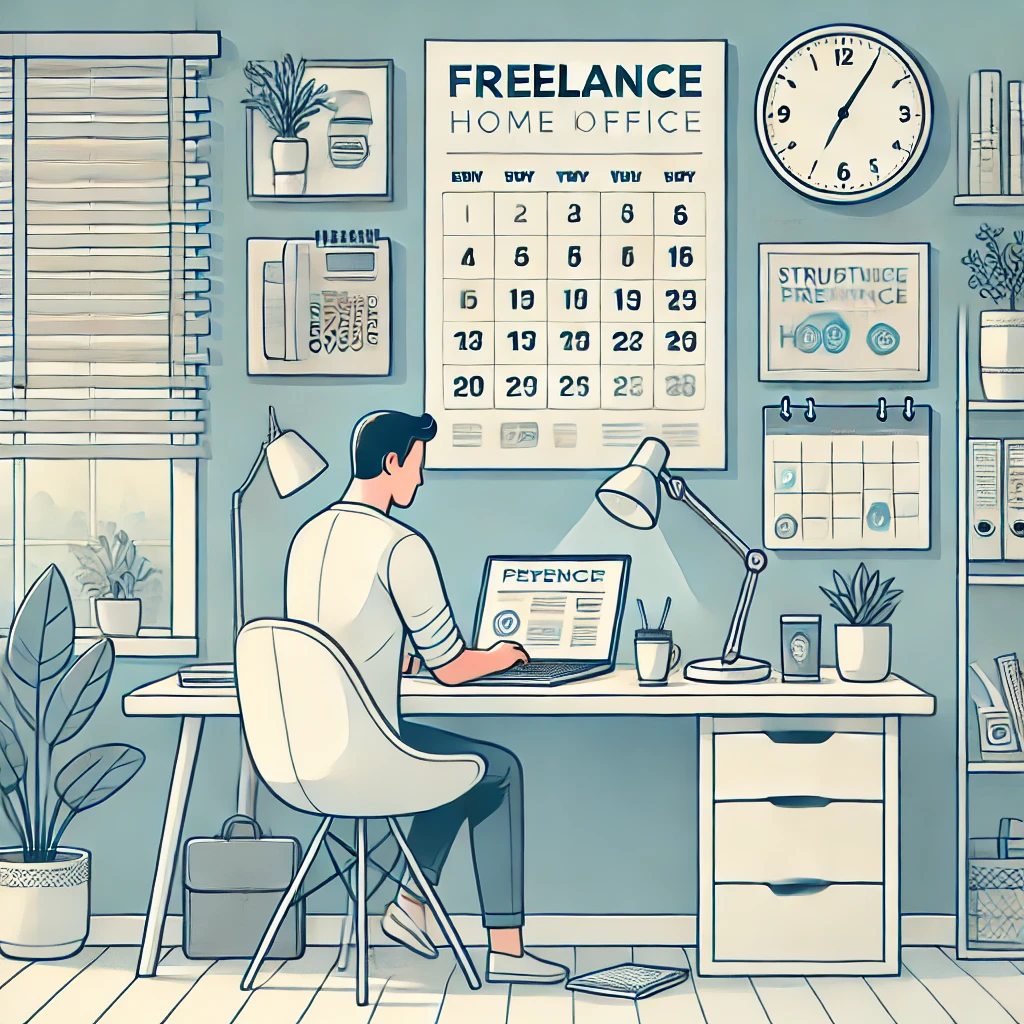
How to Stay Productive While Freelancing: 7 Effective Tips
Freelancing offers incredible freedom, but with that comes a lot of responsibility. If you're struggling with staying productive, don't worry – you're not alone! Here's how to stay on track and make the most of your freelance career.
Why Freelancers Struggle with Productivity
Let's be honest, freelancing sounds great at first. You get to choose your hours, work from anywhere, and pick your clients. But the lack of structure can quickly lead to distractions. Without a boss or set office hours, it's easy to lose focus and miss deadlines. How can you beat that? Well, it all comes down to implementing some solid productivity strategies.
Effective Freelancing Tips for Remote Work Essentials
1. Create a Dedicated Workspace
Working from your couch might seem comfortable, but it’s a productivity killer. Whether it’s a cozy corner of your living room or a full-fledged home office, designate a specific space for work. This helps your brain shift into “work mode” and minimize distractions.
2. Set Clear Goals and Deadlines
Without clear goals, freelancing can feel like wandering through a maze. Set daily, weekly, and monthly goals. Break larger projects into smaller, manageable tasks. This not only helps you stay focused but also allows you to track your progress.
3. Use Tools for Remote Workers
Remote work tools are your best friends when it comes to managing projects and staying productive. Tools like Trello, Asana, and Slack can help you stay organized, communicate with clients, and track your progress without breaking a sweat.
4. Time Management for Remote Professionals
Time management is a skill that every freelancer must master. Try techniques like the Pomodoro Technique or time blocking to help structure your day. Remember to include short breaks to refresh your mind – it’s all about balance!
Maximizing Freelancer Productivity with Client Management Strategies
5. Communicate Clearly with Clients
Clear communication is crucial in freelancing. Always clarify the project scope, deadlines, and expectations with your clients before starting. Regular updates will help avoid misunderstandings and keep everything on track.
6. Learn How to Negotiate Rates with Clients
One of the toughest things about freelancing is setting your rates. It’s tempting to just accept whatever clients offer, but that can lead to burnout. Do your research and confidently negotiate fair rates. Remember, you’re offering a valuable service!
Top Freelance Platforms to Find Gigs and Grow Your Business
7. Use Top Freelance Platforms
Looking for the best freelance opportunities? Sites like Upwork, Fiverr, and Freelancer.com are great places to start. But don’t just stop there – leverage LinkedIn and social media to market your services and connect with potential clients.
How to Build a Successful Freelance Career
Building a freelance career takes time, effort, and dedication. Always focus on delivering high-quality work, building a strong portfolio, and nurturing relationships with clients. Building your reputation as a reliable freelancer will lead to repeat business and referrals.
Best Strategies for Finding Freelance Gigs
The best strategy is to diversify where you find freelance gigs. While freelance platforms are great, don’t forget about networking. Attend events (virtual or in-person), and ask past clients for referrals. Being proactive about seeking opportunities pays off!
Top Tools for Organizing Your Freelance Workflow
Task Management and Organization
Managing multiple projects at once can be overwhelming. Tools like Todoist or Monday.com are great for keeping track of your tasks. They allow you to prioritize and stay on top of your deadlines without losing your mind.
Communication Tools
Whether it’s emails, video calls, or instant messaging, communication is key to a successful freelancing career. Tools like Zoom and Skype help you stay connected with clients no matter where you are.
How to Start Freelancing with No Prior Experience
If you're new to freelancing, it’s essential to start small. Begin by taking on lower-paying gigs to build your portfolio and gain experience. Over time, you can increase your rates as your expertise grows. Don’t be discouraged – everyone starts somewhere!
How to Market Yourself as a Freelancer
Marketing yourself is one of the most important aspects of freelancing. Make sure your online presence is professional and consistent. A personal website, a strong LinkedIn profile, and a portfolio showcasing your best work will help attract clients.
Maximizing Income through Freelancing
One of the biggest advantages of freelancing is the potential to maximize your income. You can increase your earnings by diversifying your services, increasing your rates as your skills improve, and taking on multiple clients simultaneously (without overworking yourself).